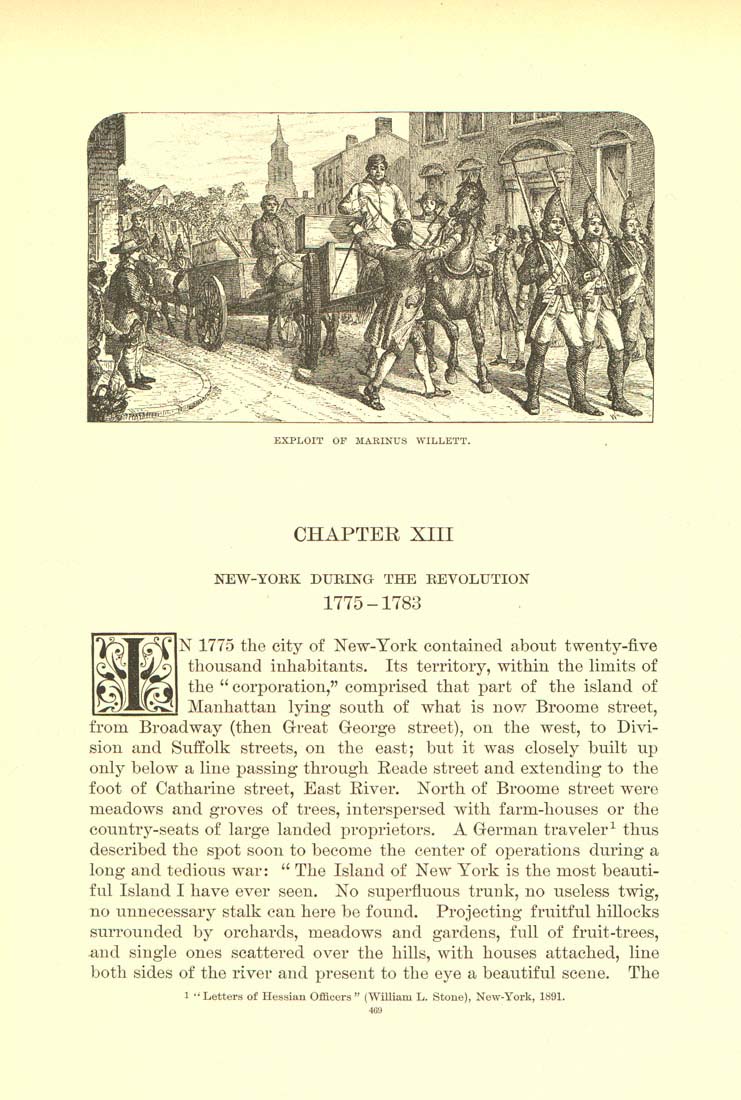EXPLOIT OF MARINUS WILLETT.
CHAPTER XIII
NEW-YORK DURING THE REVOLUTION
1775-1783
)W(s^ N 1775 thc city of New-York contained about twenty-five
jfl^j^ thousand inhabitants. Its territory, within the limits of
aI^S the '' corporation," comprised that part of the island of
MfcrwM Manhattan lying south of what is now Broome street,
from Broadway (then Grreat George street), on the west, to Divi¬
sion and Suffolk streets, on the east; but it was closely built up
only below a line passing through Reade street and extending to the
loot of Catharine street, East Eiver. North of Broome street were
meadows and groves of trees, interspersed with farm-houses or the
country-seats of large landed proprietors. A German traveler^ thus
described the spot soon to become the center of operations during a
long and tedious war: " The Island of New York is the most beauti¬
ful Island I have ever seen. No superfluous trunk, no useless twig,
no unnecessary stalk can here be found. Projecting fruitful hillocks
surrounded by orchards, meadows and gardens, full of fruit-trees,
-and single ones scattered over the hills, with houses attached, line
both sides of the river and present to the eye a beautiful scene. The
1 '^Letters of Hessian Officers" (William L. Stone), New-York, 1891.
469
|








